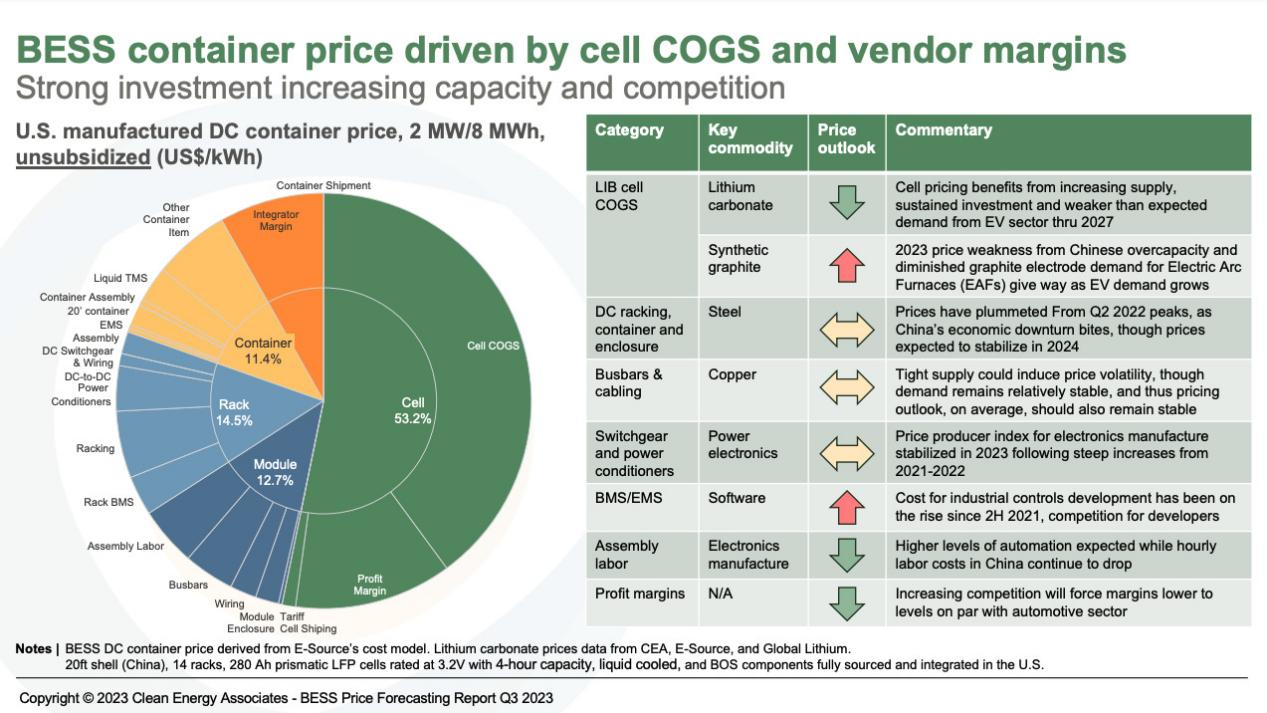
Inquiry
US-Made DC Containers to Compete with China by 2025
CEA states that in 2023, a fully manufactured US DC BESS container will be priced at an average of $256/kWh for delivery in 2024/25. In comparison, a container manufactured in China for US delivery in 2025 costs $218/kWh. Remember that the latter price includes a 10.89% Section 301 tariff for specific Chinese goods.
CEA's forecasts are based on a 20-foot container that consists of 14 tacks of 280 Ah prismatic lithium iron phosphate (LFP) battery cells. These cells are rated at 3.2V with a 4-hour capacity and a liquid-cooled system.
The report suggests that if the subsidies for US clean energy technology production provided by the IRA are passed on to the customer, the price of US-made BESS could decrease by 13%. Specifically, these subsidies include the 45X tax credit for battery cell production, which pays $35/kWh of production to the manufacturer, and the 30D tax credit for consumers purchasing an electric vehicle (EV) powered by a battery that meets domestic content requirements.
It is important to note that these incentives will be applicable once US manufacturing is scaled up in 2025. The IRA and its upstream incentives have already attracted significant manufacturing investments in clean energy, including lithium-ion batteries and energy storage.
Additionally, there are domestic content requirements that BESS projects need to meet in order to qualify for a 10% adder to the investment tax credit (ITC) for standalone energy storage. This adder can be monetized by investors in the project. These requirements are separate from the 30D tax credit requirements mentioned earlier.
The CEA report confirms that BESS costs are expected to decrease in 2023 after the spikes observed in 2022, primarily due to the rising prices of lithium carbonate. In the future, BESS costs will continue to follow a mostly downward trajectory due to the decreasing cost of lithium.
CEA states that lithium-ion battery cells make up approximately half of the cost of a containerized BESS solution. US-manufactured lithium iron phosphate (LFP) cells cost 30% more than those manufactured in China, at $123.9/kWh and $78.7/kWh, respectively. However, with the incentives provided by the Inflation Reduction Act, US lithium-ion batteries could become the lowest-cost option worldwide.
Refer to CEA's infographic for a breakdown of BESS costs and the long-term price outlook for the different components of a complete solution.
For more relevant information, subscribe to ACE Battery.
Our expert will reach you out if you have any questions!

